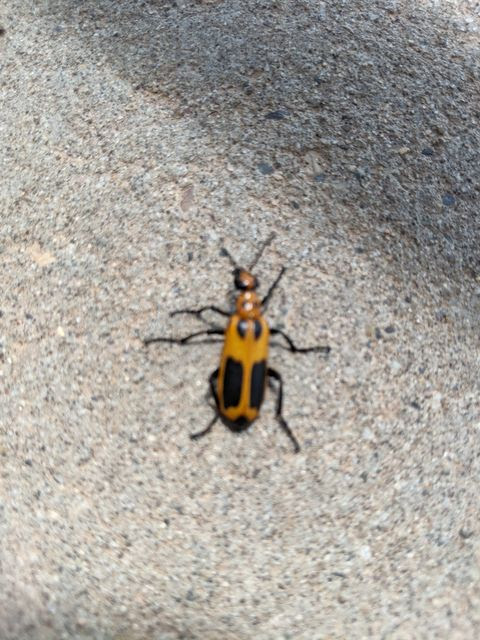Thank you to Alexis and the students at Spring Creek School for sharing photos of this colorful beetle (and for tuning into the Online Bug Encounter each week!). We’re glad to see that they did not hold it, as blister beetles can ooze a liquid that can blister skin. The chemical responsible, cantharidin, is highly toxic to animals, but has been used by humans as both an aphrodisiac (Spanish fly, a blister beetle native to Europe) and a medical remedy.
Adult Yellow-crescents feed on nectar, while the larvae likely prey on grasshopper eggs or parasitize solitary bee nests. To our knowledge, no larval host record exists for this genus, although species have been reared on honey bee larvae and provisions. This species is not well documented in Montana (if it all) but there are records for Wyoming, just a short drive away from Decker.
Photos by: Alexis Wickard Nikirk on 5/27/21 in Decker, MT
